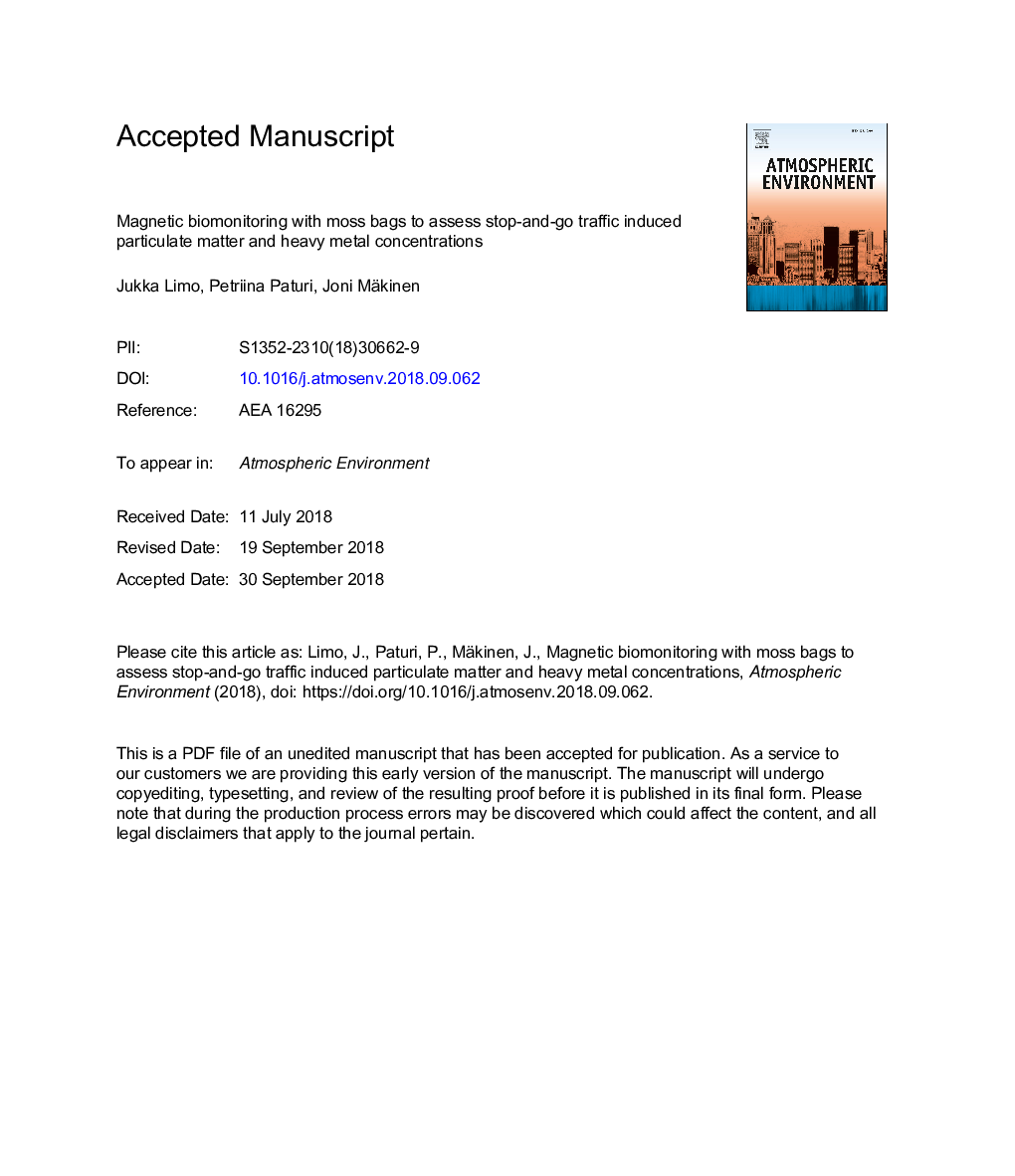| Article ID | Journal | Published Year | Pages | File Type |
|---|---|---|---|---|
| 11017758 | Atmospheric Environment | 2018 | 34 Pages |
Abstract
Urban air quality is strongly affected by the surrounding local traffic and emission compounds such as particulate matter (PM) and heavy metals, which pose a serious health risk globally. These compounds are known to be traffic related, but fairly few studies have focused on point source emissions of traffic flow. In this study we applied magnetic biomonitoring using moss bags (Sphagnum papillosum) to study the point source emissions caused by stop-and-go traffic. Moss bags were placed alternately at traffic light crossings (nâ¯=â¯19) and midway areas between the crossings (nâ¯=â¯29) along four street transects and one separate traffic light crossing in the city of Turku, Finland. Samples were analysed for mass-specific magnetic susceptibility (Ï), hysteresis parameters and elemental components. The PM was composed of fine-grained pseudo-single-domain (PSD) magnetite and the concentrations of Ï, Cu, Mo and Sb significantly differed between traffic light crossing areas compared to midway areas. The elements Ba, Cu, Fe, Mo, Ni, Pb, Sb and Ti showed moderate to high levels of accumulation and correlated strongly with Ï and saturation magnetisation (MS). Our results show that a high volume of stop-and-go traffic is a major source of harmful PM pollution especially along busy main roads. To improve urban air quality and public health we strongly advice the municipal administrations to pay more attention to urban planning and traffic management to reduce stop-and-go traffic and decrease the levels of urban PM pollution.
Related Topics
Physical Sciences and Engineering
Earth and Planetary Sciences
Atmospheric Science
Authors
Jukka Limo, Petriina Paturi, Joni Mäkinen,
